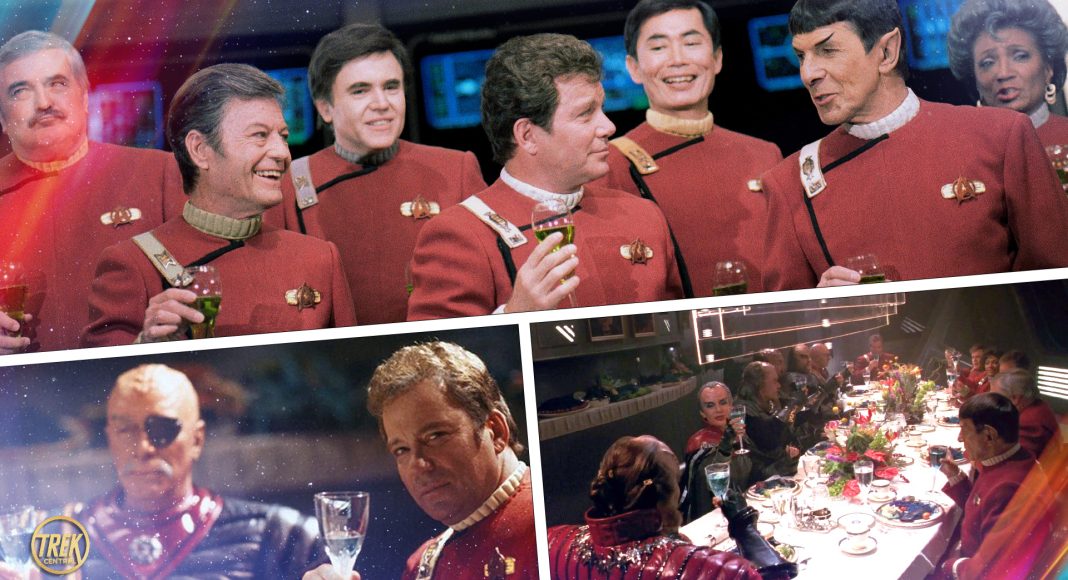With Halloween passing, Thanksgiving in the US, the Solstice, and other Winter Holidays approaching, “Tis the season to be jolly”. And, sometimes, to change. It’s also the perfect time to explore Star Trek‘s ‘Rituals of Togetherness and Change’.
Rituals have a beginning, middle, and end. They build meaning and community. They change us. A story is a kind of ritual, brushing your teeth can be a ritual or even a daily sonic shower. Further, rituals can be old or completely novel. Specifically, anthropologist Victor Turner defined “communitas” in rituals. “Communitas” is the equality and closeness we feel with other ritual participants even those who may differ in status from ourselves outside of the ritual.
Communitas of the Undiscovered Country
Often, Star Trek‘s rituals have the potential to strategically diffuse tensions between communities or individuals. A great example of this is the Federation-Klingon dinner reception in Star Trek VI: The Undiscovered Country. The equalizing force of “communitas” is used here to bring antagonists face-to-face to foster greater understanding. The Khitomer Conference in this film had similar goals. However, legal formality can hamper real change in ritual practices or even mask true intents… To that end, I’ve previously written about justice/prisons in Trek.
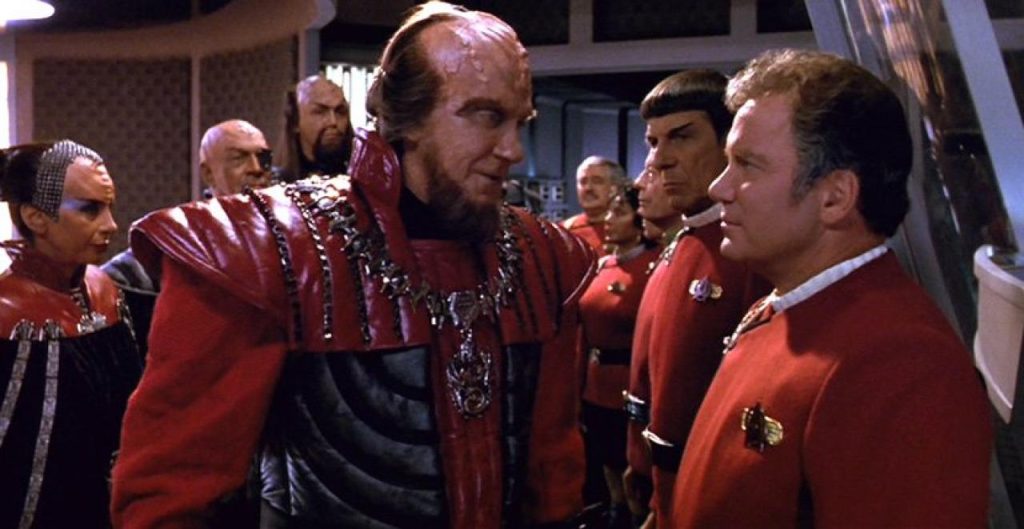
Consider it the worst Thanksgiving dinner ever. Admiral Kirk (William Shatner), whose son was murdered by the Klingon Empire, sits down with a clueless Chancellor Gorkon (David Warner). They stuff their faces with strange food they must pretend to like and drink heavily. This is a fairly typical All-American Thanksgiving, sans the murdering. The purpose of this dinner is to create what Victor Turner called “liminality“. “Liminality” is a state in which formalities are dropped and social ambiguity creates opportunities for interventions.
As with the aforementioned dinner, not all of Star Trek’s rituals are successful. As an American who no longer celebrates Thanksgiving with their family, I can personally attest to this. If the goal of a ritualistically shared meal is to create social harmony, many often fail in today’s sociopolitical climate. Similarly, as in Kirk and Gorkon’s dinner reception, bigotry and conflict can easily trash a potentially powerful ritual.
Alexander the Great
When people think of rituals, they tend to think of “rites of passage”. Specifically, these are rituals in which the goal is to transform individuals into typical examples of their society or culture. “Coming-of-age” rituals are probably the most familiar. Examples include age-of-majority rituals, religious rites, hazing, etc. The relationship of individuality with community are anchoring points in such rituals. Alexander Rozhenko (Brian Bonsali) learns this in Star Trek: The Next Generation (TNG) episode “Firstborn”.
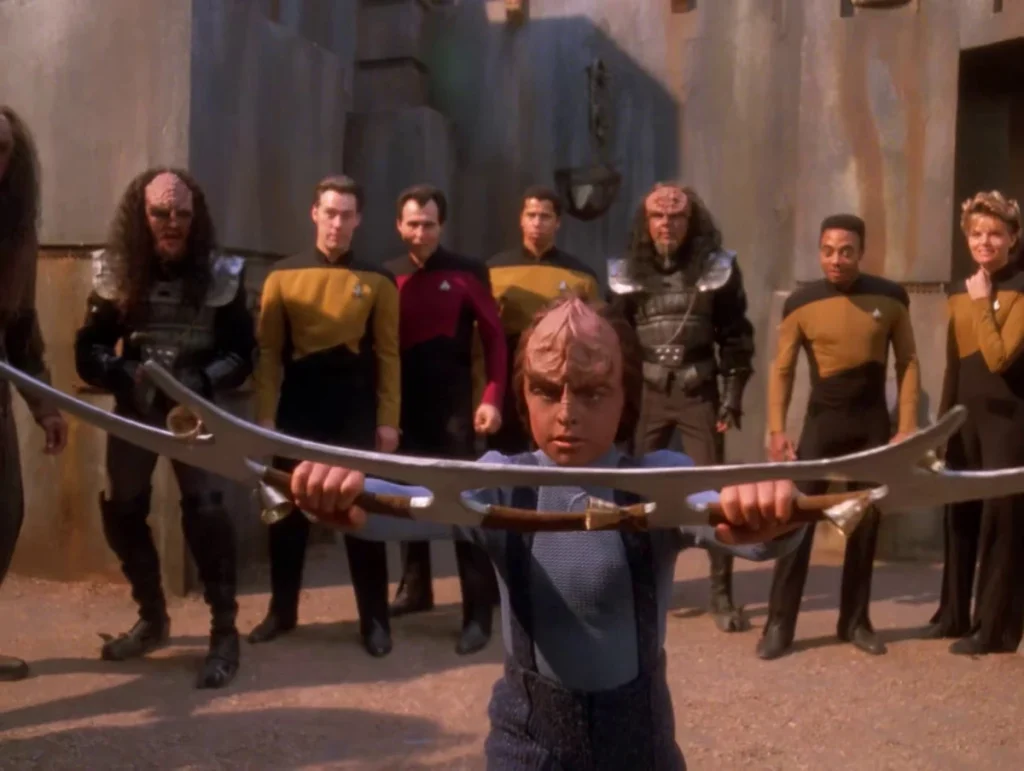
Worf (Michael Dorn) informs his son Alexander that the Klingon “Rites of Ascension” includes two phases. Worf completed the the second phase, the “painstiks” (sic.) ritual, involving getting whacked with sticks, in the earlier TNG episode “The Icarus Factor”. After explaining, Worf tasks Alexander to complete only the first phase, a candle-lighting ceremony, which sets out a Klingon’s intention to become a warrior. Worf says that this is not just about being a warrior but becoming a proper Klingon. Alexander has no interest.
Notably, Alexander is a “liminal” person his whole life, not just in participating (or not) in this rite of passage. For example, he is one-quarter Human, raised on earth, and alienated by bullies of both species. Alexander’s status is always ambiguous. “Firstborn” explores fitting in when we don’t fit in, as well as feelings of belonging, family, and integrity. Worf eventually realizes, via an older alternate timeline version of Alexander (James Sloyan), that rituals are only a means to an end and not the end themselves.
Resistance is Futile; Trauma is Inevitable.
Most rituals are painful or uncomfortable. In fact, depending on the person or circumstances a ritual can even be harmful. Further, there is much evidence to suggest that the pain and discomfort that make some rituals memorable can easily lead to long-term scarring or trauma (e.g. hazing rituals). Specifically, becoming Borg is one such ritual with which liberated Borg struggle their whole lives.
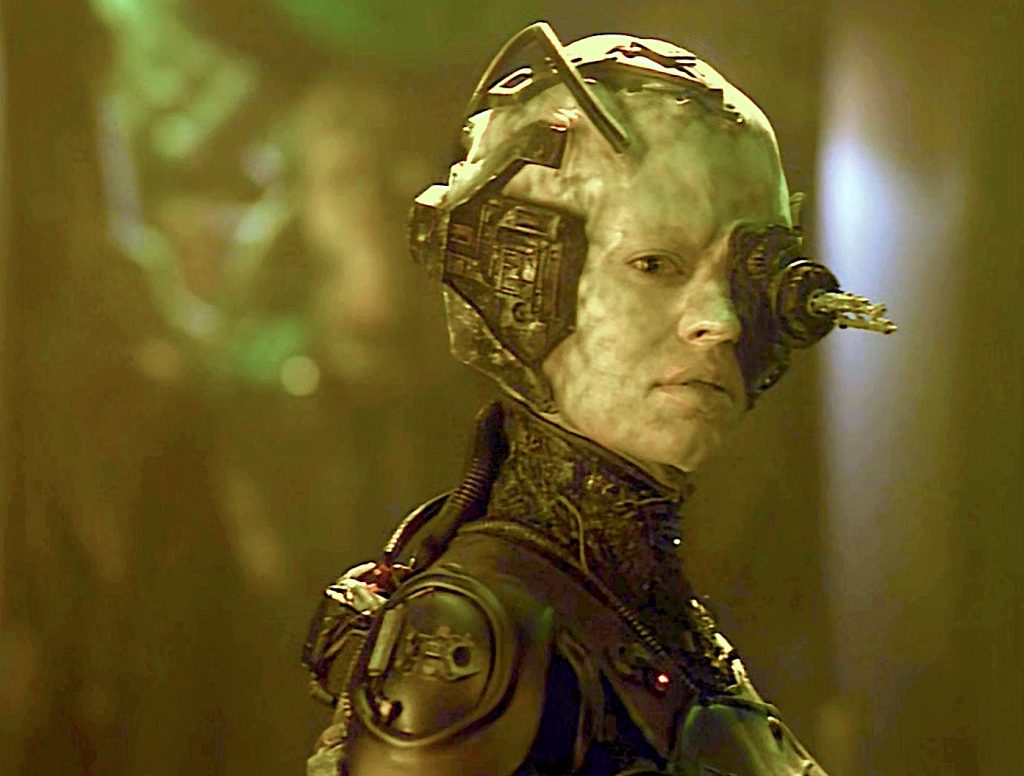
Picard embodies this trauma in painful flashbacks in the film Star Trek: First Contact as well as most of season 3 of Star Trek: Picard. However, Seven of Nine’s (Jeri Ryan) journey from Star Trek: Voyager (VOY) to Picard captures more nuance.
Firstly, the crew of Voyager ripped her away from her abusive context and routines, wherein she participated in similar abuses as a Borg (VOY “Scorpion II”). Later, the Doctor (Robert Picardo) forces her to deal with suppressed memories (VOY “Retrospect”). Finally, she overcomes the remaining stigma of abuse heaved upon her by Starfleet’s command throughout Picard. Previously, I wrote about Seven’s liberating journey in the article, “The Feminist Struggle in Star Trek“.
Trials and (Trill)bulations
Regarding learning from past traumas, probably one of the most interesting of Star Trek’s rituals is “Zhian’Tara”. This ritual is portrayed in the Deep Space Nine episode “Facets”. Lt. Cdr. Jadzia Dax (Terry Ferrell), a joined Trill, must undergo the rite of Zhian’Tara. Her Trill-symbiont’s previous hosts’ personalities are excavated from memory and mentally distributed to the bodies of her closest friends. Her friends come to understand and appreciate her more as a result. In our society, we call this group therapy.
In the course of this ritual, Jadzia comes face to face with her own demons and fears. Meanwhile, her friends learn to know and accept her and her symbiont for all that they are. This ritual is also a kind of rite of passage creating communitas and liminality. In this case, Jadzia becomes a more complete person. Interestingly, this same ritual has multiple uses.
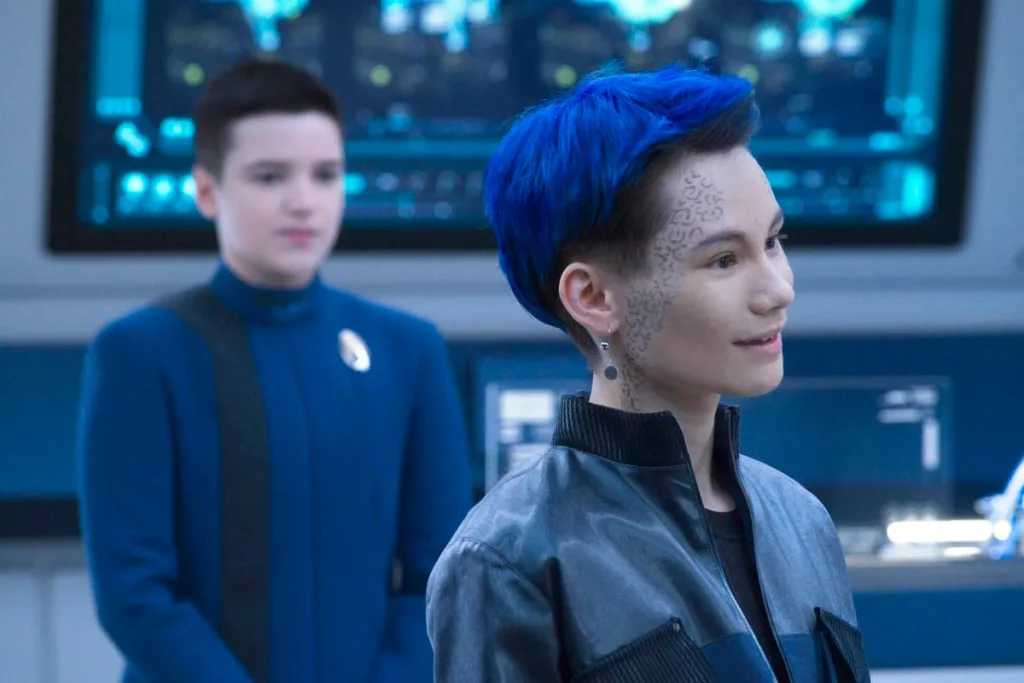
Namely, in the Star Trek: Discovery episode “Choose to Live”, Gray Tal (Ian Alexander) is trapped as a separate consciousness in his partner Adira Tal (Blu del Barrio). Gray takes on a new life through the Zhian’Tara ritual. In an affirmation of life, he separates from Adira’s symbiont and inhabits a Soong-type android/golem to become whole again. Reinterpreting old rituals is sometimes how new rituals are created. Those of us who spend time with our chosen family over the holidays experience this firsthand.
The Ritual of Picard and Dathon at El-Adrel
Regarding purpose-built rituals, before Lt. Kayshon (Carl Tart) debuted in Star Trek: Lower Deck‘s “Kayshon, His Eyes Open”, his enigmatic species, the Tamarians encountered Cpt. Picard for diplomatic talks in TNG‘s “Darmok”. Problematically, federation translators could not truly understand the extremely metaphorical and myth-based structure of this new species’ language. Tamarian Cpt. Dathon (Paul Winfield), acutely aware of this difficulty and the conflict it could create, devised a ritual of togetherness.
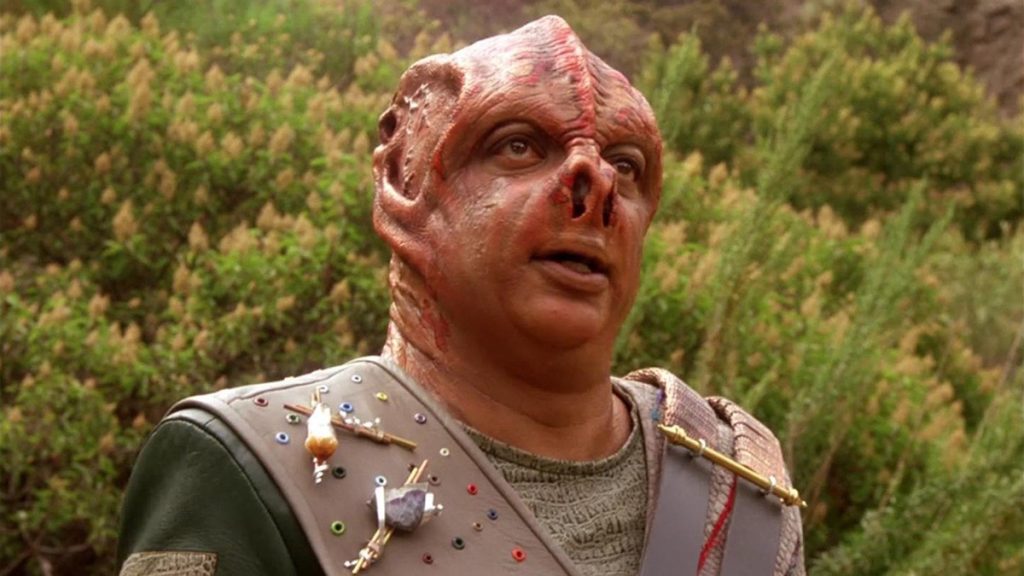
In an act of extreme risk, Dathon had himself and Picard transported to the surface of a nearby planet “El-Adrel”, inhabited by a dangerous and powerful beast. On the planet, Dathon is able to communicate, by example, that their situation is similar to that of “Darmok and Jalad at Tanagra”; two heroes in Tamarian folklore. Picard comes to understand that this phrase, which Dathon can only repeat, is an invitation to work together and that story-telling is the primary method of communication for Tamarians.
Following this revelation, Dathon perishes in battle and the surviving Picard finally returns to the Enterprise. When Dathon’s people ask what has happened, Picard demonstrates Dathon’s success by stating “Picard and Dathon at El-Adrel”. The deadliness of this particular ritual aside, Dathon demonstrates that we can create our own rituals to serve a higher purpose of togetherness.
As the holiday season approaches, those of us who feel lonely or abandoned might do well to keep in mind that we can create our own rituals with whomever we wish and for whatever reason we wish.
More from Trek Central
🚨 – The Companion Thanksgiving Special with Star Trek’s John Billingsley
🔥 – Review: The Autobiography of Benjamin Sisko
🔍️ – Has the original USS Enterprise filming model been found?
Join the Star Trek conversation via our social media platforms:
- Facebook – https://www.facebook.com/TrekCentral
- Instagram – https://instagram.com/TrekCentral
- Twitter – https://twitter.com/TheTrekCentral
- YouTube – https://youtube.com/TheTrekCentral
- Discord – https://discord.gg/f62Gbcu
